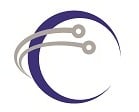
Our team used GPU accelerated deep learning to increase efficiency, upgrade performance, and significantly boost productivity.
Company Profile
This public utility provides natural gas and electricity to 6.7 million of Michigan’s 10 million residents, serving customers in all sixty-eight of the state’s Lower Peninsula counties.
Products & Services
Our team used GPU accelerated deep learning to increase efficiency, upgrade performance, and significantly boost productivity. Our team also installed and upgraded a number of Python libraries, including TensorFlow, H2O, Keras, Imblearn, Torch, XGBoost, CatBoost, and Fastai.
Business Challenges
As the client was unable to reduce utility consumption in the commercial sector, they set their focus on reducing residential sector consumption. One method to achieve this was the energy-efficiency programs AC Peak Cycling, Smart Thermostat, and Peak Time Rewards. However, when customers did not sign up for the appropriate power-saving program that fit their needs:
-
Residential sector consumption was not effectively reduced
-
Potential electricity savings were not realized, costing the company potential revenue
Customers were dissatisfied with the results/benefits of the program they signed up for Compounding the problem were some additional roadblocks:
Project Goals
The primary goal of this project was to create a program-based recommender model for 1.3 million residential Demand Response Contract Accounts. This model would predict customer preference for three energy-efficiency programs -- AC Peak Cycling, Smart Thermostat, and Peak Time Rewards -- and rank the programs in order of the customer’s preference.
Additionally, the client wanted a channel-based recommender model to find the optimal outreach channel for customers enrolled in the AC Peak Cycling program. This predictive model would rank email, direct mail, and phone in order of customer preference, to determine the most effective mode of communicating with each customer.
Project Results
Our team aggregated the customer prediction results of three different prediction models: H2O’s Gradient Boosting, LightGBM and Deep Neural Networks. Based on these, our team built robust Machine Learning-based predictive models that analyzed customer usage and demographics data to accurately predict the probability of a consumer enrolling in one of three programs. Out of 74,000 early enrollments, 94% of customers who joined the AC Peak Cycling program were successfully predicted by our team’s model.
Our team also developed the ability to make accurate recommendations for which channel of communication a customer would prefer (i.e. email, direct mail or phone). This empowered the company to more accurately budget their marketing spend for each communication channel and reach out to customers via the most effective channel.
Additional Project Results
-
Overcame the data insufficiencies of nascent programs with boosting and sampling techniques, providing results on par with the company’s data requirements
-
Optimized existing code and updated modules to streamline the data pipeline
-
Increased productivity, operational performance, data integration capabilities, and overall data quality
-
Upgraded the ML server to handle any Machine Learning framework
-
Streamlined SQL queries and made SQL and Python aspects of the code modular for ease of handling and usability
-
Wrote custom-code to optimize the memory usage of datasets, thereby decreasing runtimes and increasing computational efficiency

Posted by PDI Marketing Team
Pacific Data Integrators Offers Unique Data Solutions Leveraging AI/ML, Large Language Models (Open AI: GPT-4, Meta: Llama2, Databricks: Dolly), Cloud, Data Management and Analytics Technologies, Helping Leading Organizations Solve Their Critical Business Challenges, Drive Data Driven Insights, Improve Decision-Making, and Achieve Business Objectives.




.png?width=352&name=image%20(20).png)